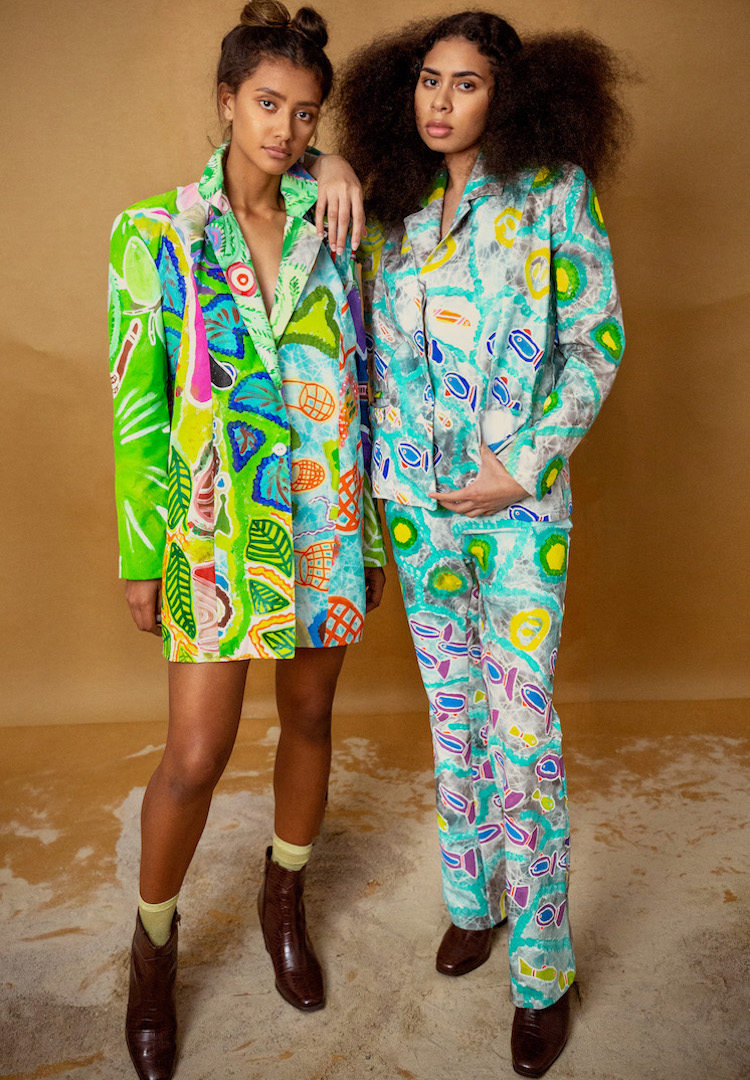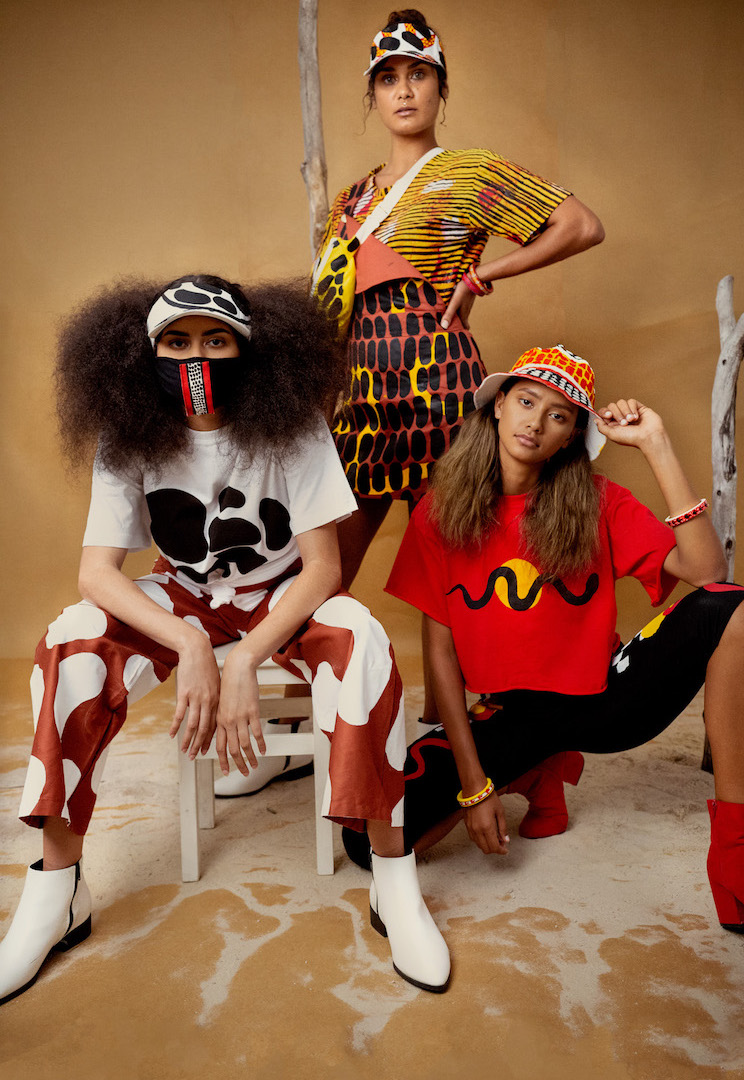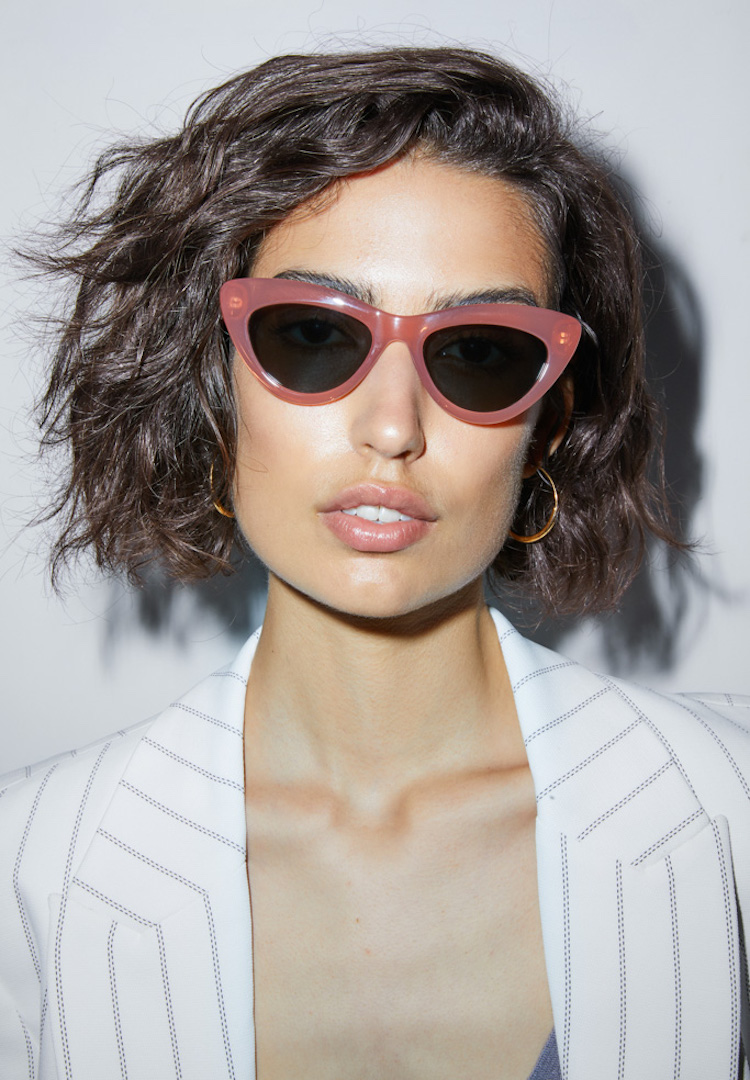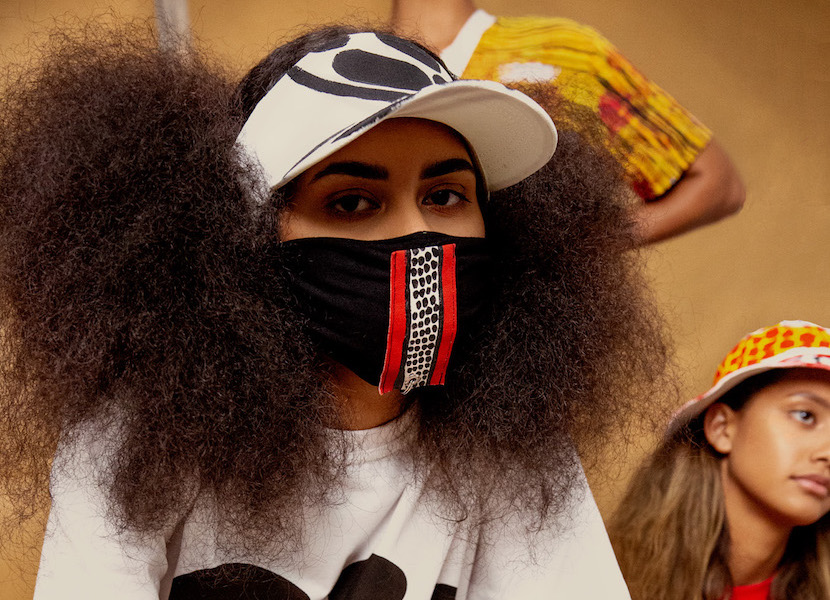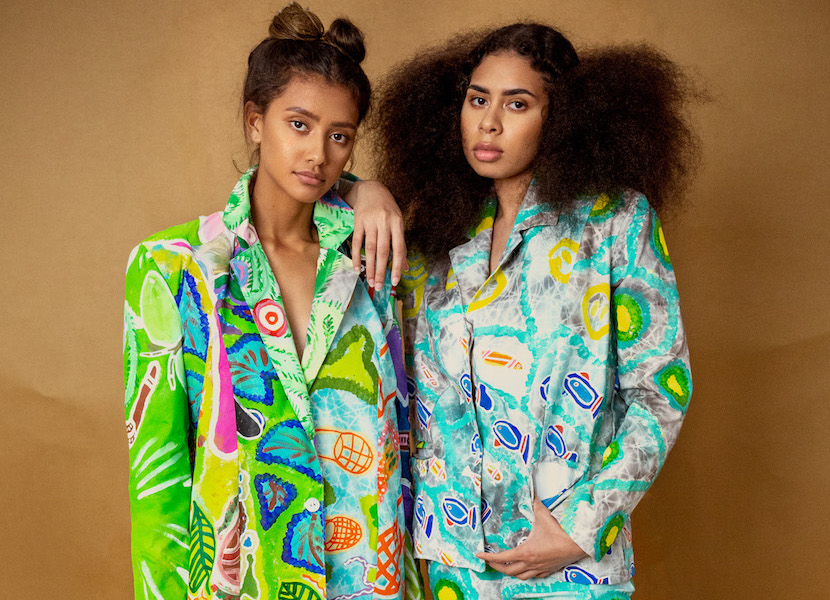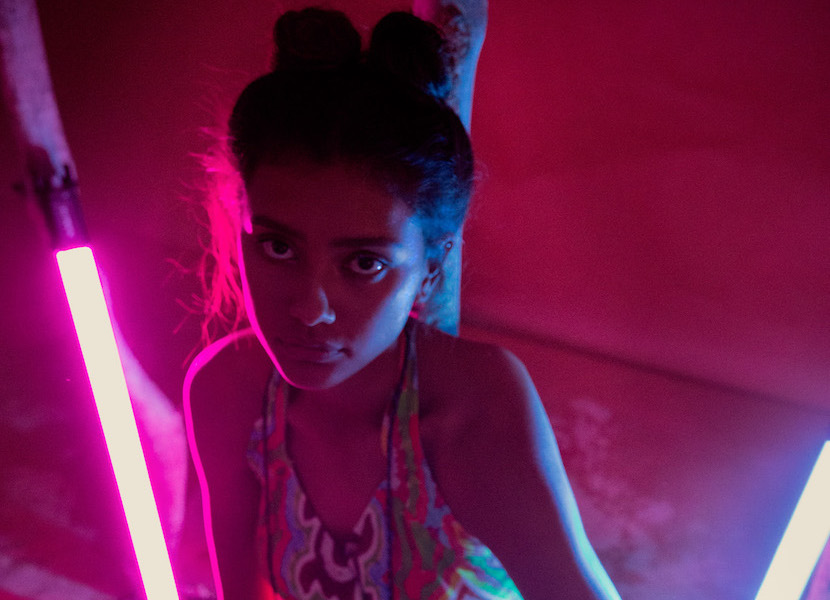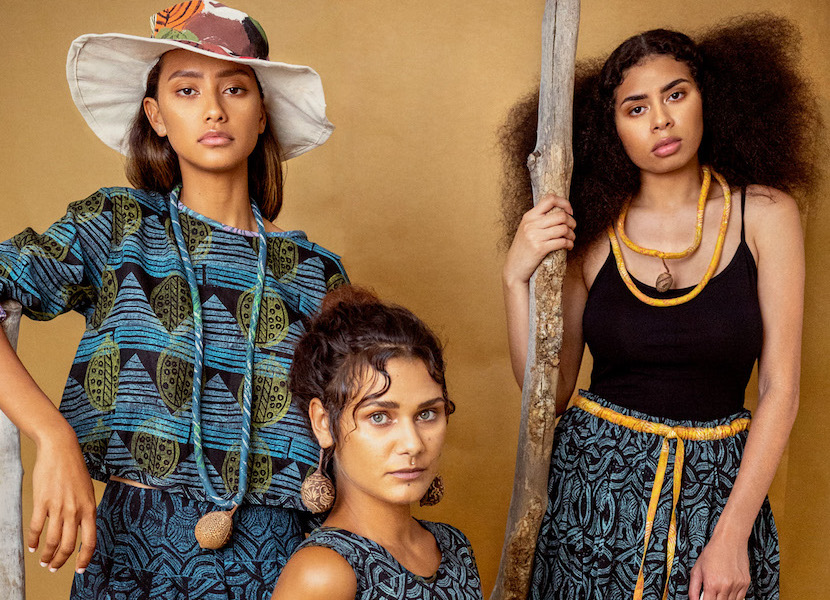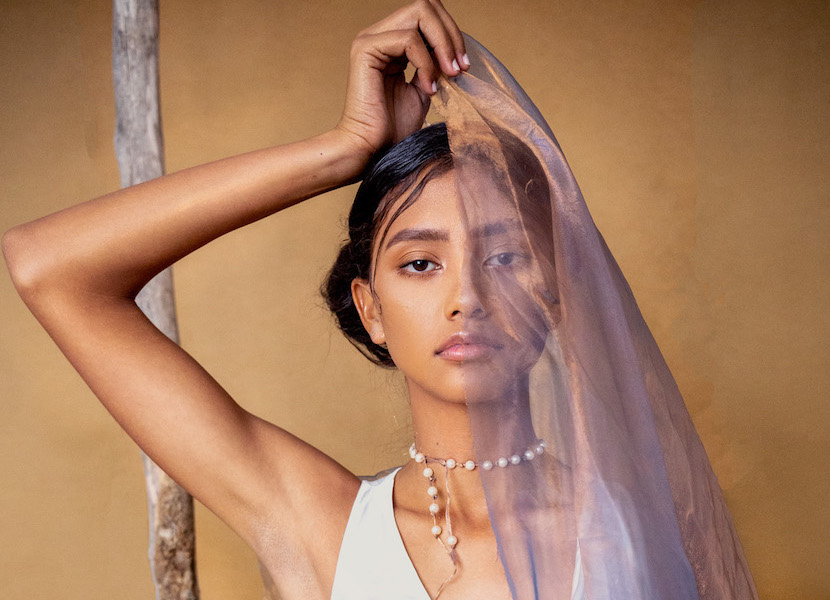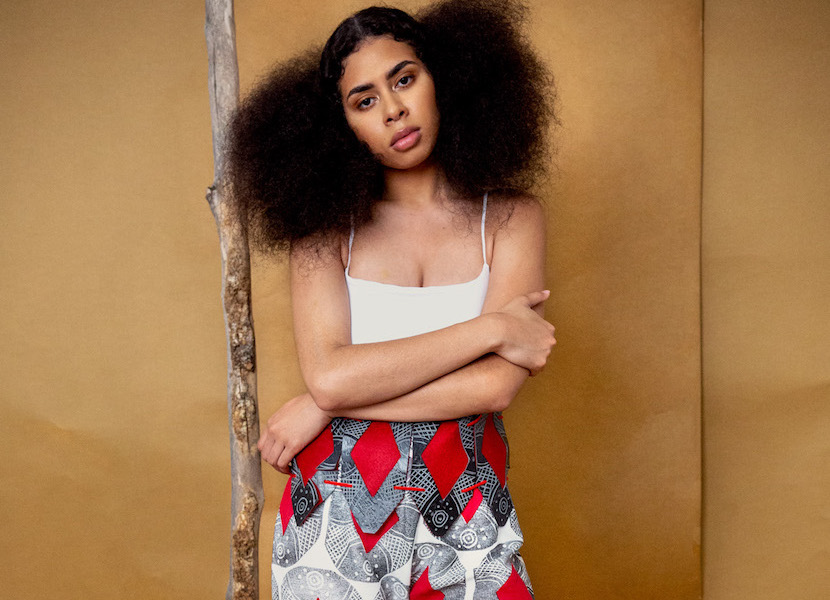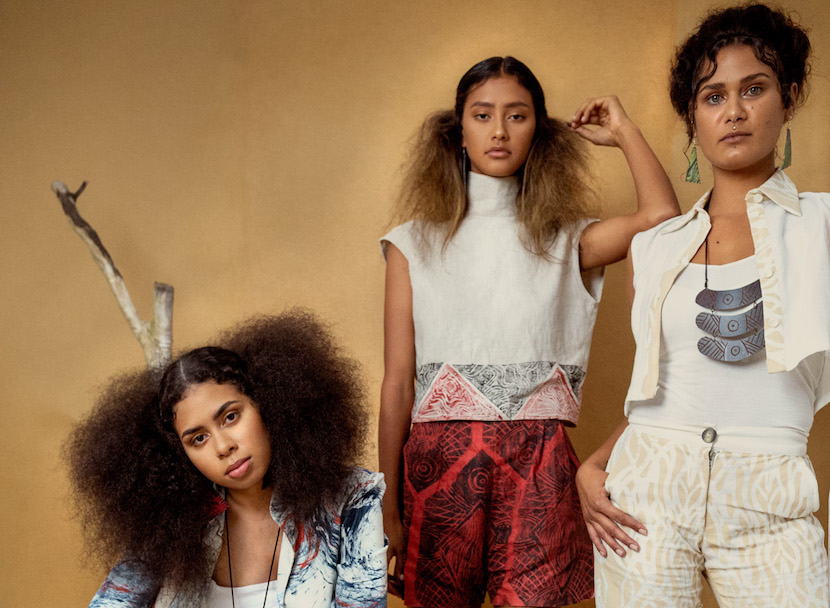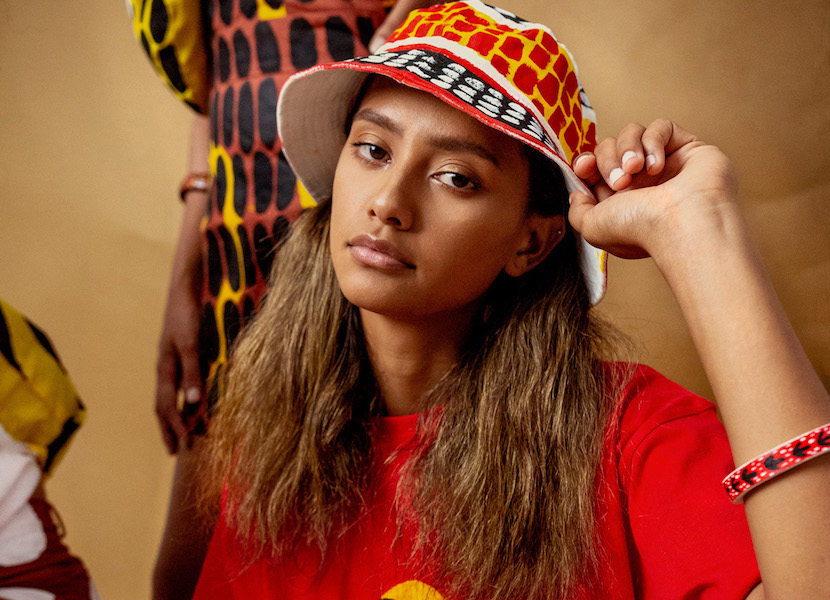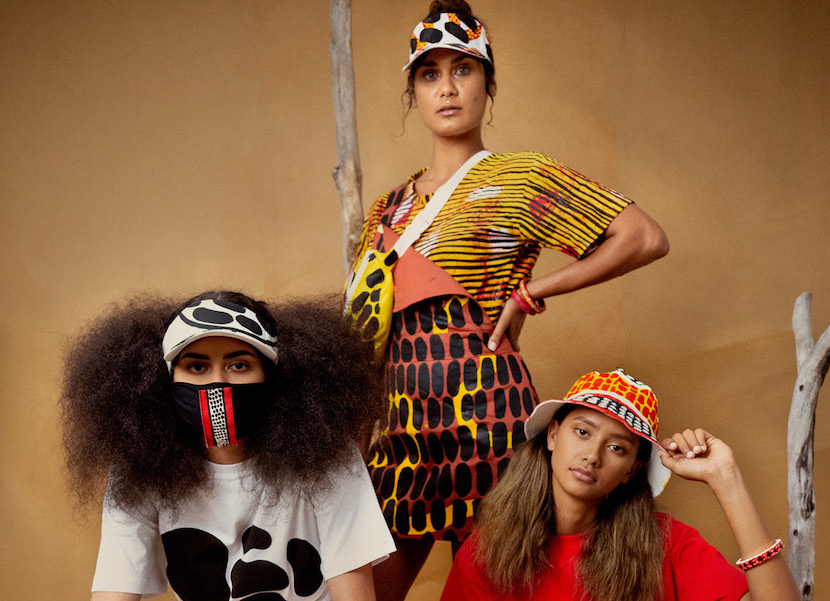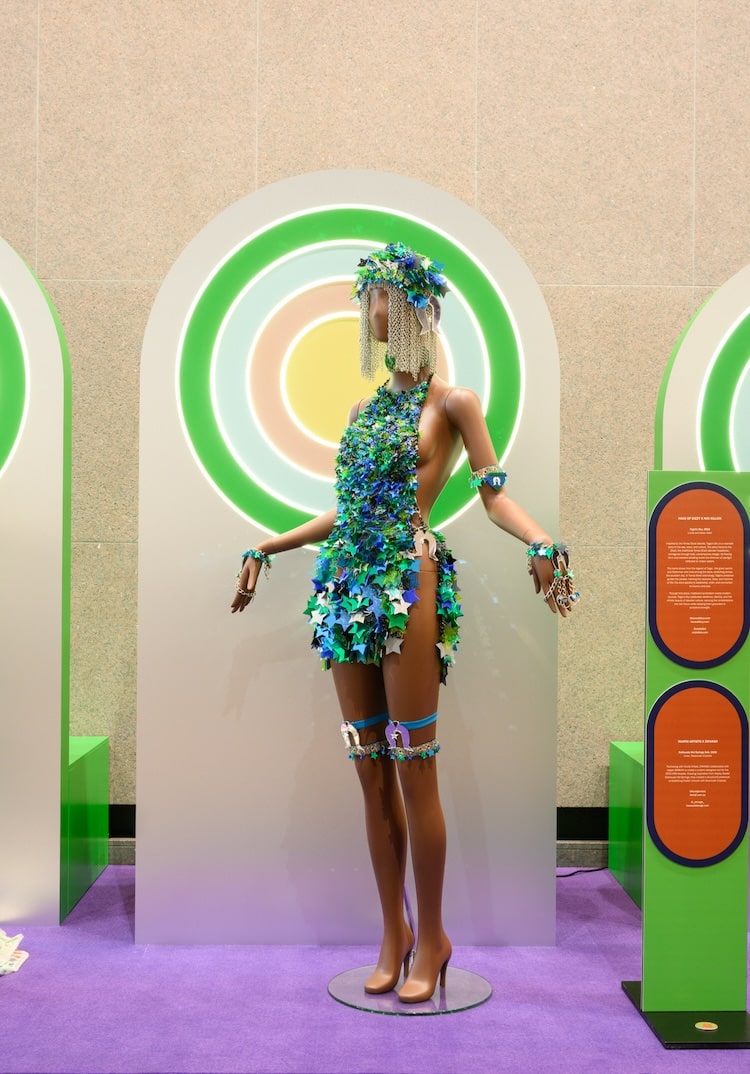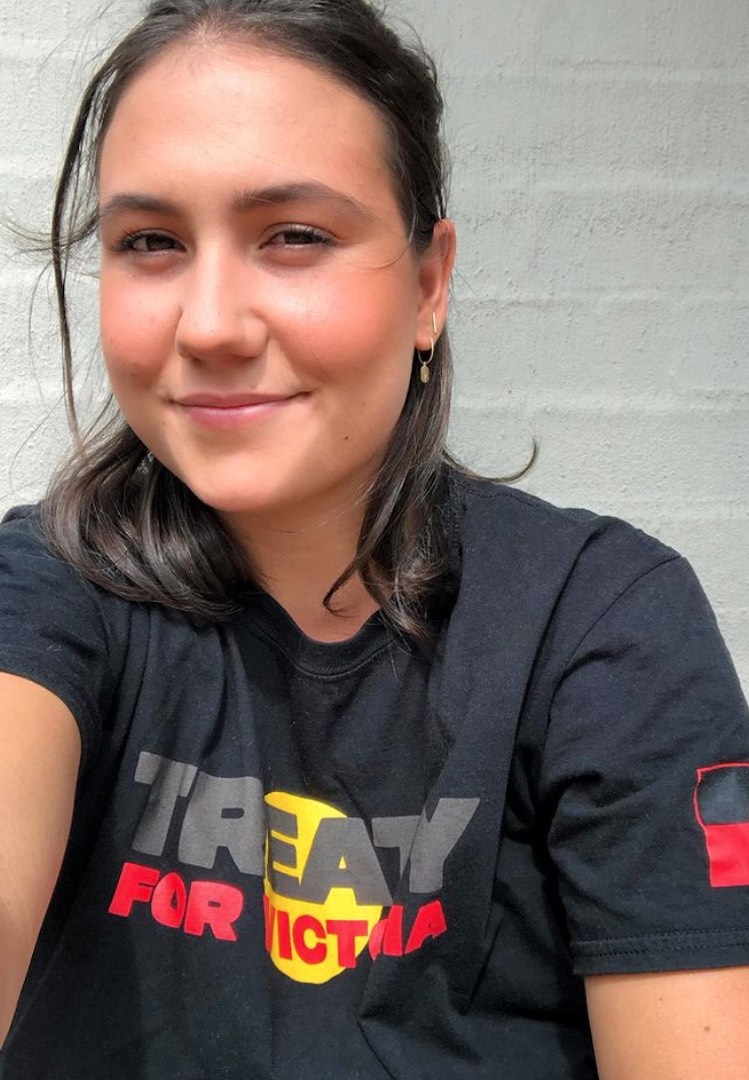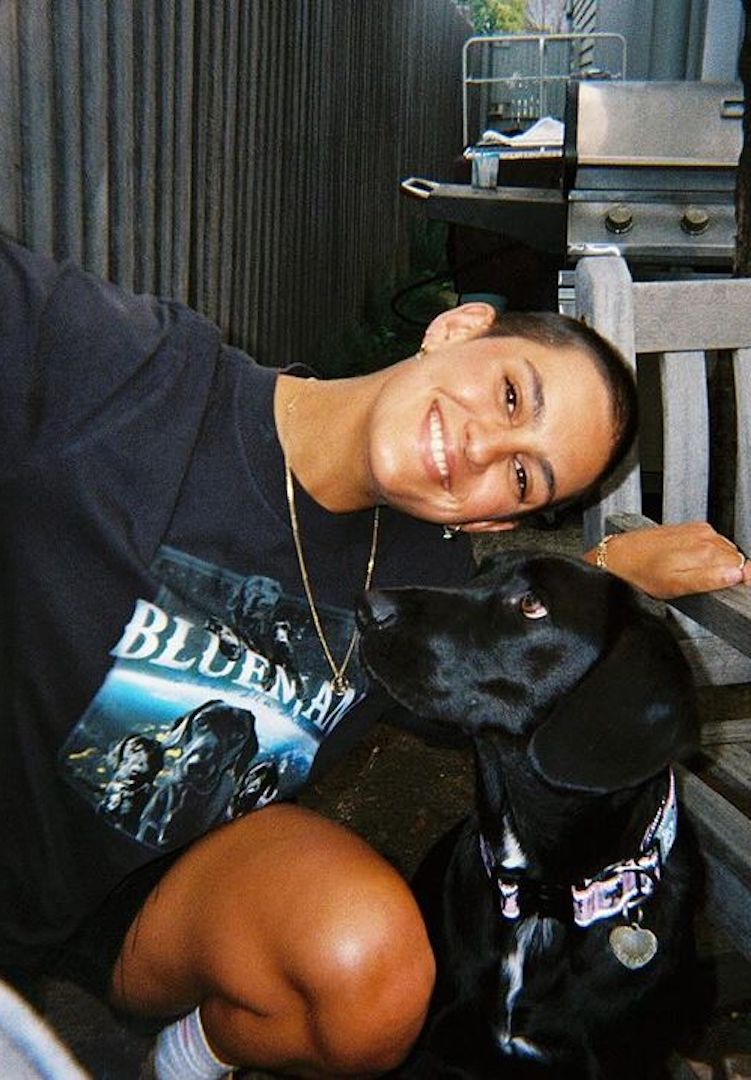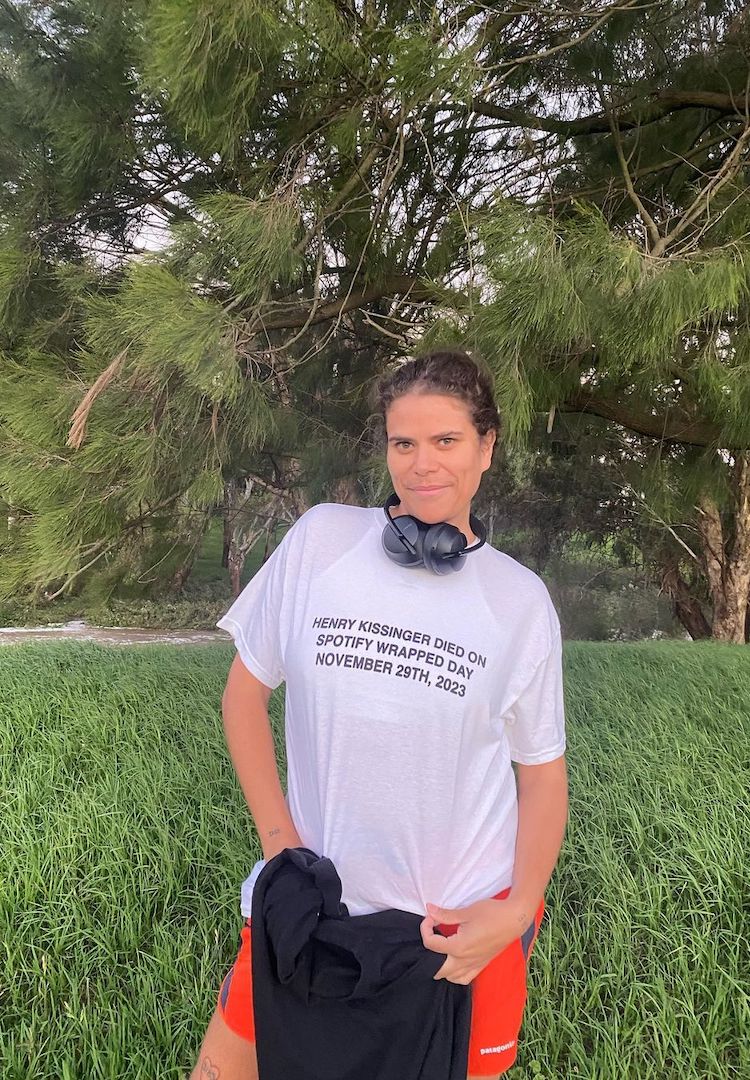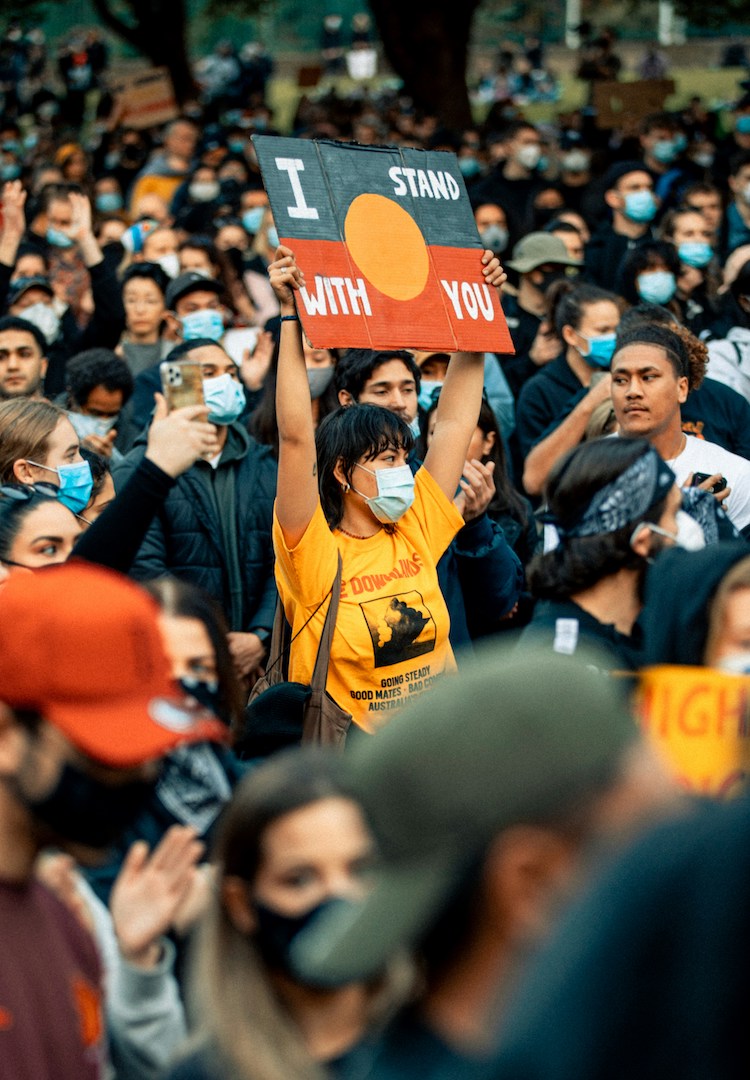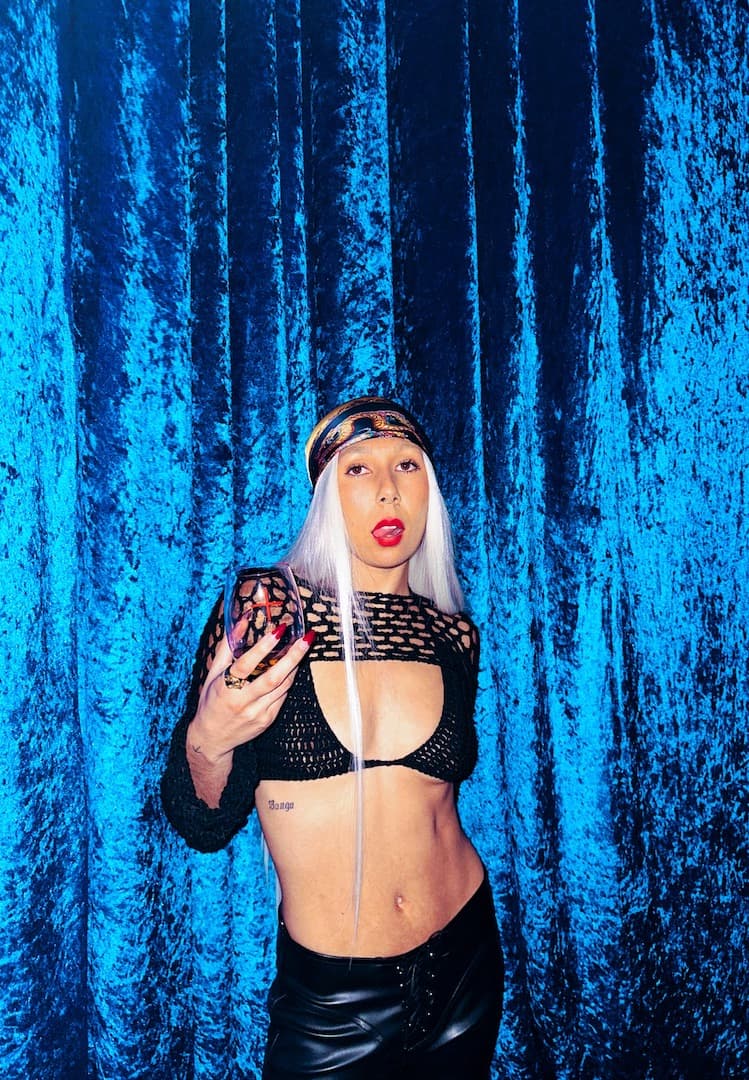5 designers to watch in 2021, according to First Nations Fashion and Design
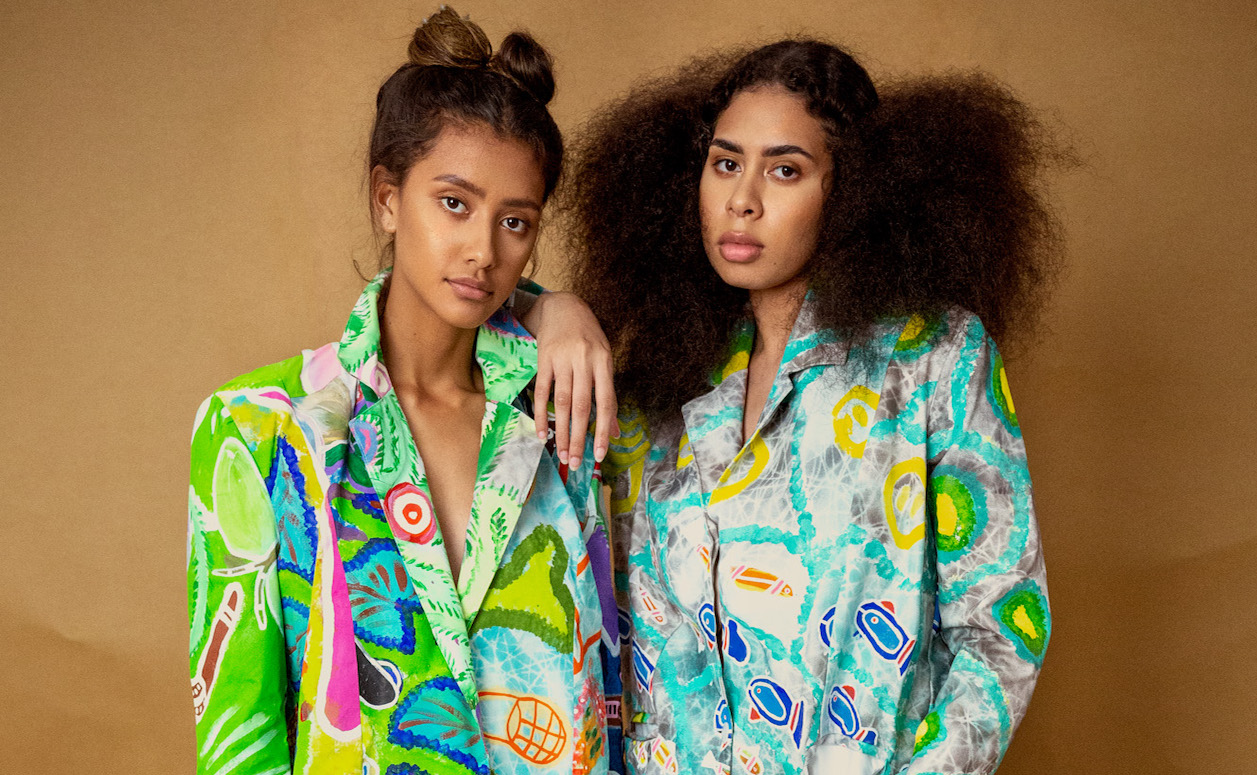
Photographer – Roger Dat
SHOOT ASSISTANT – Jamaylya Ballangarry
PHOTO EDITOR – CRAIG WILLIAMS
STYLIST – GRACE LILLIAN LEE
STYLIST’S ASSISTANT – MONIQUE BURKHEAD
HAIR AND MAKEUP – KELCIE SAVAGE
Words – BRIDGET CALDWELL-BRIGHT AND JESSICA CUSKELLY
Keep your eyes peeled.
Fashion Journal is proud to continue an ongoing partnership with First Nations Fashion and Design, launched this NAIDOC Week. It follows past mistakes by Fashion Journal that caused hurt to the First Nations’ community (you can read our apology in full here), and we are proud to be moving forward collaboratively with such talented Australian creatives.
With 2020 almost behind us (thank god), it’s time to round up the best of the year that was. And what better way to kick things off than by highlighting a few of the First Nations artists and designers who are transforming the Australian fashion scene and paving the way for future Indigenous creatives?
In partnership with First Nations Fashion and Design, we spoke to five creatives about their careers and the importance of culture and country in Indigenous art, and their incredible work is featured in the gallery above.
Elverina Johnson – Yarrabah
Elverina Johnson is a big name in the art world, and for good reason: boasting a career that spans 30 years in the visual and performing arts industry, Elverina is a singer, songwriter, playwright, actor, photographer and artist who was named Artist of the Year by NAIDOC in 2017.
As a Gunggandji woman from the Yarrabah Aboriginal Community in Far North Queensland, Elverina’s artwork is inspired by country, community and culture.
“I would describe my creative practice as one of a natural and progressive flow that ultimately relies on what inspires me, or that will generate a storyline that connects to my culture,” Elverina says.
“There is no shortage of inspirations. I am particularly drawn to stories of the ocean as I grew up by the sea and love fishing as I was taught by my Grandmother how to fish.”
“My culture is always embedded in my work. Every aspect of my work has meaning and is in some way connected to my culture and the cultural practices of the Gungganji People and my community of Yarrabah, the home of the Gungganji people.
“And it has to. It is a means to keep our stories alive and to educate people about who we are as First Nations Peoples.”
Lynelle Flinders – Sown in Time
Dharrba Warra woman Lynelle Flinders is an artist and textile designer who heads First Nations fashion label, Sown in Time. Drawing upon her rich cultural heritage and passion for country, Lynelle specialises in hand-printed textiles that express her creativity and tell her story.
“My designs are usually abstract, meaning I separate or withdraw something from something else, this is what I do when creating a design,” Lynelle tells me. “I’m not looking to do a true replica of the story or object, but just take a piece from it and build it into something, like the colour of the tail feathers on a black cockatoo.”
Her practice is an exercise of sustainability as well as creativity, with the regeneration and love of the land at the forefront of her practice. “My father would collect ground orchid and mangrove roots and use them for dyeing, he would make sure he took only what was needed,” she explains.
With a Diploma of Indigenous Visual Art under her belt, Lynelle is heavily involved in the North Queensland art scene. Her work has been showcased at the Cairns Indigenous Art Fair’s Fashion Performance since 2013, and she also works with local artists at Bana Yirriji Art Centre designing hand-painted silks.
Emily Doolah – Kara Lar Wali
Emily Doolah is a Torres Strait Islander woman who uses art to link the past with the present. Drawing on her Indigenous heritage and knowledge, Emily’s work focuses on maintaining cultural dialogue by fusing the old with the new.
“This knowledge of cultural and traditional practices has been passed on for many generations. It has been nurtured and refined, as part of expressing my cultural identity, which is linked to people, land, and community,” she explains.
“As a Torres Strait Islander, the ownership involves roles and responsibilities for each individual to look after and safeguard their own traditional and cultural practices because the past must exist for the present to create the future.”
Emily uses her craft as a means of preserving and educating audiences of the beauty of Torres Strait. In collaboration with FNFD, she showcases how to manipulate and deconstruct palm leaf fish weaves, by using contemporary materials to enhance and revitalise traditional weaving practice.
Nickeema Williams – Keema Co
Twin duo Nickeema and Keemon showcase their design and works through a joint Instagram account. Working across jewellery-making, graphic and fashion design, these multidisciplinary artists are a brother and sister force to be reckoned with.
According to Nickeema, culture is embedded in every piece of work that the twin creatives produce.
“We are Koa, Kuku Yalanji and Meriam, we come from the bush, the rainforest and sea. Connection to country and land is a big part of our identity no matter where we are living or working staying grounded keeps us strong. Art is our voice and fashion is just another way for us to amplify our messages.”
Speaking of their latest collection, Nickeema says: “Our patterns this time around feature hand-painted techniques, which for this new collection, we think makes each piece unique; there’s a certain degree of spontaneity and fluidity to them.”
“We had started looking for inspiration in patterns and repetition while out on country. Living out bush there are a lot of harsh lines, strong colours and textures. Our collection is based on snakeskin. The creator, its movement and the process. of shedding and becoming stronger and more resilient. We chose bold colours almost as protest, with red being like blood,” she tells me.
2020 was in no way an easy year, but it reminded Nickeema that her work is more important than ever.
“2020 saw more people fighting for Black and First Nations people, with the Black Lives Matter movement and the many protests globally. This year showed how critical our voice, our wellbeing and our culture is. We have all come so far and there’s still a long way to go. Fashion is a form of visibility, and through our work, we’re hoping to support in building representation and more opportunities for First Nations people.”
Waringarri Arts
The final creative on this list isn’t an individual, it’s an art centre that has been supporting Indigenous artists for nearly 40 years. Established in the late 1970s, Wiringarri Arts is the first Indigenous-owned art centre established in the Kimberley region, and one of the oldest continuously operating art centres in Australia.
According to its website, Waringarri is a “living, growing art centre celebrating the uniqueness of Miriwoong cultural identity.”
Supporting more than 100 artists, including painters, printmakers, wood carvers, boab engravers, sculptors and textile designers, the art centre houses art studios, landscaped garden areas and the Dawang Gallery, where selected works from the Waringarri collection are showcased alongside multimedia presentations that share the richness of Miriwoong cultural identity with both community and visitors.
Cultural tours and performances complement the visitor experience and provide a rich insight into Miriwoong culture.

